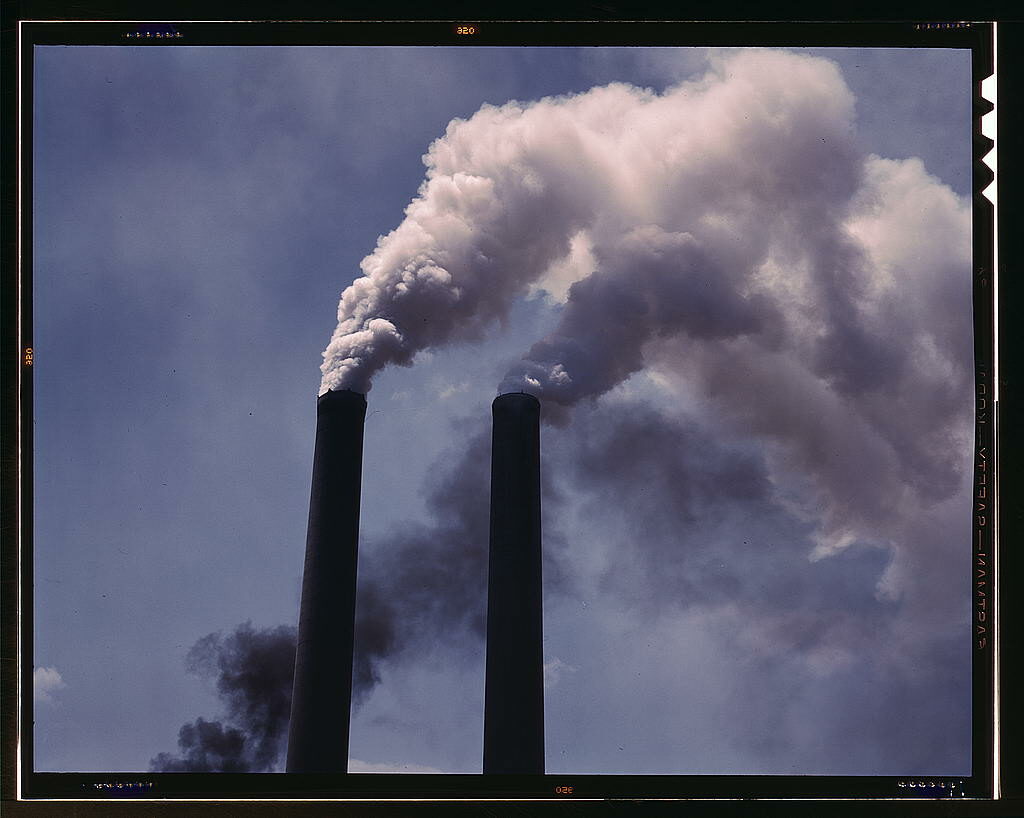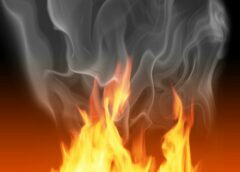By Jessica Monterrosa
Think of the last time you were at a bonfire. Maybe you were at the beach, or a camping site. At sunset, everyone huddles around a fire pit. You lean toward the fire to get cozy and cook your hot dogs and s’mores. You wait in anticipation for your perfectly roasted marshmallow, enduring itchy eyes and a sore throat while breathing in the thick smoke. Even though you only spend a few hours next to the fire, you know that your car, your room, and even your closet will smell like the campfire for the next few days, or at least until you wash all of your camping gear. Why? Each time you sit next to a bonfire, you are breathing in a slew of toxic particles and irritant gases. These persistent chemicals not only end up stored with your camping gear, but also find their way into your lungs.


In an earlier post, Living with Wildfires, we discussed how people manipulate fire for beneficial purposes. The earliest evidence suggests that Homo erectus, an extinct hominid species, was working with fire up to 1.5 million years ago in East Africa. While humans have mastered the art of burning biofuels, naturally occurring carbon-based materials, these combustion activities emit hundreds of chemical compounds into the environment in the form of air pollution. Even on a small scale, burning biofuels releases a complex mixture of chemicals which visibly pollute the environment and contribute to human disease.
There are several different types of biofuel sources, including wood, charcoal, dung, and brush. Scientists study biofuel emissions from different types of sources to determine which forms of air pollution might be more harmful for human health. There is little debate over the link between air pollution and poor health. Many studies show that people who experience prolonged exposure to biomass smoke have a higher chance of developing cancer, cardiovascular disease, or pulmonary disease, as well as being more likely to have babies of low birth weight or to have impaired cognitive function. The people most likely to suffer from the long-term health effects of biomass smoke are women and children in low-income rural communities who rely on biofuels, or wildland firefighters who are occupationally exposed to smoke. With that being said, biomass smoke is still only one source of air pollution.
Scientists categorize air pollution by the source of origin, or by its physical and chemical characteristics, which helps us understand which sources need to be monitored and tightly regulated. Air pollution that is due to human activity is considered to have an anthropogenic source. Leaky car tailpipes and billowing factory smoke are considered anthropogenic sources of air pollution. Air pollutants can also be classified as primary pollutants (directly released into the environment, such as woodsmoke from a bonfire) or secondary pollutants (those formed in the atmosphere). These anthropogenic air pollutants mix with particles from natural sources (also known as biogenic sources) which include volatile organic compounds that come from vegetation, pollen, volcanic gases, or dust from deserts. Once released into the air, pollutants can form either gases or solid particles, and they each uniquely affect the ambient environment. Pollutants affect weather patterns, cloud formation, sunlight scatter, and air quality. This is because air pollutants are constantly changing in the environment and interacting with everything they come across.
Air pollution and your environment
How many sources of air pollution can you spot right now? In California, I often drive by oil refineries, military bases, airports, seaports, construction sites, and crop fields and cow fields smelling like fertilizer, all while driving behind diesel trucks that transport all the goods. It’s a highly visible problem, and the activity and commerce of southern California is part of the problem. These air pollution sources form the perpetual haze and smog of inner cities.
Ozone is another commonly discussed air pollutant in climate change science and an important secondary pollutant formed in the atmosphere. Sunlight breaks down primary pollutants to form secondary pollutants, including ozone. Ozone is very reactive, but as exemplified by the 1980s ozone hole concerns, ozone can also be depleted by these ongoing ambient reactions. The ozone hole was attributed to hair-spray aerosols and refrigerant chemicals that break down and utilize ozone.
Air pollution and your health
Air pollutants affect our living environment, climate, and health. When there is a complicated mixture of chemicals in the air caused by numerous sources, it is difficult to determine which compounds are responsible for causing disease. Even though humans have been burning biofuels for thousands of years, we still don’t understand exactly how these emissions can cause such a wide range of diseases. Our advancing understanding of the biological and chemical science underlying air pollution has informed environmental policies that encourage the public to use green space, avoid exercise near major roadways, and improve household ventilation. We have come a long way from the days of raining coal ash, such as during the Great Smog of London in 1952. Historically, air pollution scientists have made large strides toward creating healthier air quality since the industrial revolution and outlining occupational protections for vulnerable workers such as coal miners.
Scientists continue to seek answers to the fundamental questions of how chemicals react in the air and in the body, to inform policy. The next steps are to devise solutions that are realistic for vulnerable populations, create sustainable industry practices, and address environmental justice issues that negatively impact the most susceptible populations around the world.
This study was published in Philosophical Transactions of the Royal Society B.
—Jessica Monterrosa is a PhD student in Environmental Toxicology at the University of California, Irvine. Her research focuses on understanding the respiratory health effects of air pollution. She is interested in science communication as a tool to address environmental justice issues.
Reference
Gowlett, J. A. J. (2016). The discovery of fire by humans: A long and convoluted process. Philosophical Transactions of the Royal Society B: Biological Sciences, 371(1696), 20150164. https://doi.org/10.1098/rstb.2015.0164

